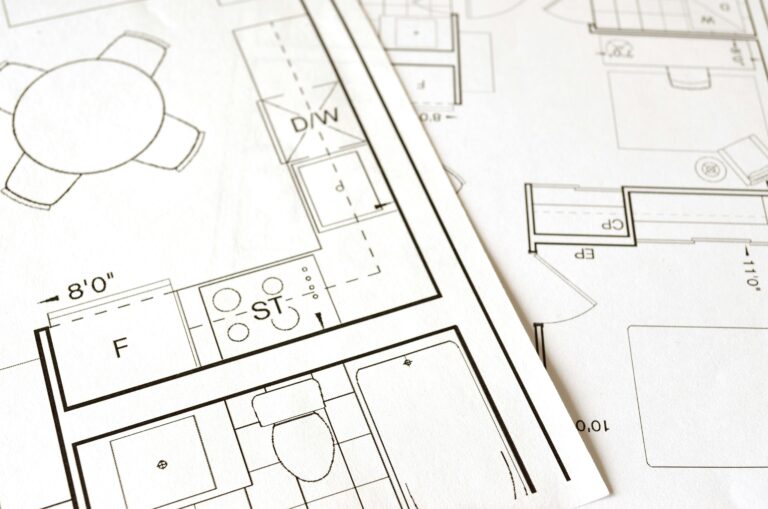Building on a Sloping Block in Brisbane: Expert Tips from Builders
A sloping block is any piece of land that drops or rises across its surface instead of sitting flat. When you build on a slope, your house needs different foundations, careful site preparation, and proper drainage planning. These extra requirements are why many buyers stick with flat blocks.
Here’s the thing, though: sloping land has a few advantages that flat sites can’t deliver. Like how the natural fall of the land lets you create split-level home designs with better views, more privacy, and interesting architectural features.
So, how do we know this? Well, our team at Begbie Bentham has spent 22 years building custom homes on Brisbane’s most challenging sloping sites, turning steep blocks into exceptional properties.
And using our experience, we’ll walk you through why sloping blocks cost more, which house plans work best, and practical ways to keep your project on budget.
Let’s begin.
What Makes Sloping Blocks Different from Flat Surface Blocks?
The main difference between sloping and flat blocks is how much work goes into preparing the land before you can start building. Let’s break it down in terms of labour.
- More Excavation and Earthworks: Sloping blocks require excavation and cut-and-fill work to create stable platforms for your house. Builders cut into hillsides and use that soil to fill lower sections. Flat blocks, on the other hand, avoid this expense because the ground starts level.
- Drainage is More Complex: Water runs downhill naturally, so your builder needs to install subsurface drains, stormwater channels, and retention systems. Without proper drainage, uncontrolled runoff can erode soil and damage your foundation over time.
- Foundations Work Differently. One side of your house sits higher than the other on a slope. Instead of a simple slab, like flat blocks, sloping sites need split-level foundations or stepped slabs that follow the land’s fall.
Now, considering all that extra labour, budgeting will be your biggest challenge.
Why Building on Sloping Land Adds to Your Budget
Simply put, you need to understand where your money goes so you can budget properly and avoid surprises during construction. Here are the details you should look out for:
Site Preparation and Earthworks
Heavy machinery needs more hours to cut into hillsides and create level platforms for your home.
On top of that, soil stability testing costs extra because engineers must verify that the ground can support the weight of your house. Typically, the cost to level land can range from $14,000 to $20,000 for an average block.
Retaining Walls and Drainage
Retaining walls hold back soil and prevent erosion, but they require engineering design once they exceed one metre in height. Along with walls, stormwater systems need careful planning to redirect water away from your foundation.
Foundation Requirements
Split-level foundations cost more than standard slabs used on flat blocks. This is mostly because an engineering certification is mandatory for sloping sites (we’ve seen too many budget blowouts from skipping this step).
Now that you know what drives up costs, let’s look at designs that work with your slope instead of against it.
House Plans That Work on Sloping Blocks
Split-level designs follow the natural slope and reduce the amount of expensive earthworks needed during construction. So instead of flattening your entire block, the house steps down with the land.
These designs also offer comfort benefits you won’t find on flat blocks. For example, homes built into hillsides take advantage of cooler temperatures. The slope acts like natural insulation because part of your home sits below ground level on one side, which keeps rooms cooler in Brisbane’s summer heat.
Another approach that works well is multi-storey layouts with garages underneath. We’ve built homes where the garage sits at street level with living floors stacked above, taking advantage of views. The slope ultimately becomes the feature that makes your home special.
Getting Your Sloping Block Ready for Construction
Most people skip proper site prep to save money upfront, then end up paying double when problems appear during the build. Hopefully, with our help, that won’t be your case.
There are three things you need to be aware of:
Geotechnical Reports Come First
These reports identify soil type and stability so engineers can design appropriate foundations for your site (Brisbane councils won’t approve your build without it). Local councils also require soil testing to comply with Australian Standards AS 2870, and the slope affects what foundation recommendations engineers make.
Survey Work Maps Your Slope
Surveyors measure exact slope angles and levels, which guide how builders will position your home. The survey data shows the fall across your block, identifies any rock outcrops, and marks boundary lines so your builder knows exactly where your house can sit.
Drainage Planning Prevents Water Damage
Early drainage planning saves you from expensive repairs down the track. Once drainage is sorted, you can move forward with controlling your overall construction costs.
Smart Ways to Control Extra Costs on Sloping Block Homes
Once your site is ready, these strategies help keep your budget under control without cutting corners on quality. The first step is choosing builders experienced with sloping blocks in Brisbane building because they spot potential problems early and avoid expensive mistakes later.
Once you’ve got the right builder, focus on your design approach. Design your home to follow the slope rather than fighting against it with excessive earthworks.
We’ve worked on slopes in Paddington and The Gap, where clients saved thousands by letting the house step with the land instead of levelling the entire block. You’ll find that the natural grade becomes an advantage instead of an obstacle.
The final piece is planning retaining walls and drainage from the start instead of treating them as afterthoughts. When these elements get integrated into your initial design, your builder can coordinate the work efficiently and avoid expensive changes during construction.
Your Next Steps for Sloping Block Brisbane Building
Sloping blocks give you the chance to build something unique that takes advantage of views and natural features you won’t find on flat land. The additional costs become worthwhile when split-level home designs create spaces that work with your block.
After designing hundreds of sloping block homes across Brisbane, we know which approaches save money and add the most value. The key is working with a builder who understands sloping sites from planning through to completion.
Ready to discuss your sloping block project? Contact Begbie Bentham to talk about turning your challenging site into your dream home.
also read: The Easy Way to Mail a Cheque Online: A Step-by-Step Guide






